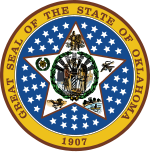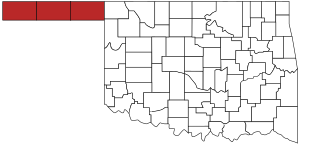
The Oklahoma Panhandle is a salient in the extreme northwestern region of the U.S. state of Oklahoma, consisting of Cimarron County, Texas County and Beaver County, from west to east. As with other salients in the United States, its name comes from the similarity of its shape to the handle of a pan. Its largest city is Guymon in Texas County. Black Mesa State Park, located in Cimarron County, is the highest point in the state. Other points of interest include Beaver Dunes Park, Optima Lake, and the Optima National Wildlife Refuge. Oklahoma Panhandle State University is ten miles away from Guymon.

Charles Nathaniel Haskell was an American lawyer, oilman, and politician who was the first governor of Oklahoma. As a delegate to Oklahoma's constitutional convention in 1906, he played a crucial role in drafting the Oklahoma Constitution and gaining Oklahoma's admission into the United States as the 46th state in 1907. A prominent businessman in Muskogee, he helped the city grow in importance. He represented the city as a delegate in both the 1906 Oklahoma convention and an earlier convention in 1905 that was a failed attempt to create a U.S. state of Sequoyah.

Martin Edwin Trapp was an American state auditor, governor and lieutenant governor of the U.S. state of Oklahoma. Oklahoma's third lieutenant governor, he was the first to become governor not through an election but instead due to the previous governor's impeachment and removal from office.
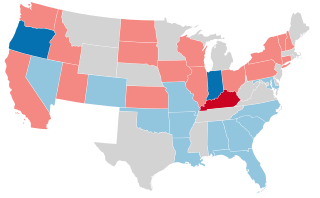
The 1908–09 United States Senate elections were held on various dates in various states. As these U.S. Senate elections were prior to the ratification of the Seventeenth Amendment in 1913, senators were primarily chosen by state legislatures. Senators were elected over a wide range of time throughout 1906 and 1907, and a seat may have been filled months late or remained vacant due to legislative deadlock. However, some states had already begun direct elections during this time. Oregon pioneered direct election and experimented with different measures over several years until it succeeded in 1907. Soon after, Nebraska followed suit and laid the foundation for other states to adopt measures reflecting the people's will. By 1912, as many as 29 states elected senators either as nominees of their party's primary or in conjunction with a general election.

The Constitution of the State of Oklahoma is the governing document of the U.S. State of Oklahoma. Adopted in 1907, Oklahoma ratified the United States Constitution on November 16, 1907, as the 46th U.S. state. At its ratification, the Oklahoma Constitution was the lengthiest governing document of any government in the U.S. All U.S. state constitutions are subject to federal judicial review; any provision can be nullified if it conflicts with the U.S. Constitution.

The lieutenant governor of Oklahoma is the second-highest executive official of the state government of Oklahoma. As first in the gubernatorial line of succession, the lieutenant governor becomes the new governor of Oklahoma upon the death, resignation, or removal of the governor. The lieutenant governor also serves as the president of the Oklahoma Senate, and may cast a vote to break ties in that chamber.
The Silver Party was a political party in the United States active from 1892 until 1911 and most successful in Nevada which supported a platform of bimetallism and free silver.

In U.S. history, the Land Run of 1893, also known as the Cherokee Outlet Opening or the Cherokee Strip Land Run, marked the opening to settlement of the Cherokee Outlet in the Oklahoma Territory's fourth and largest land run. It was part of what would later become the U.S. state of Oklahoma in 1907.

Elmer Lincoln Fulton was an American lawyer and politician who served one term as a U.S. Representative from Oklahoma from 1907 to 1909.
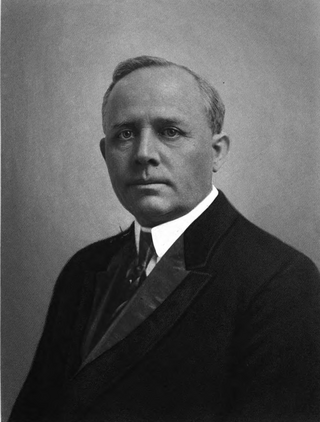
Ralph Emerson Campbell was a United States district judge of the United States District Court for the Eastern District of Oklahoma.

The following outline is provided as an overview of and topical guide to the U.S. state of Oklahoma:

The 1906–07 United States Senate elections were held on various dates in various states. As these U.S. Senate elections were prior to the ratification of the Seventeenth Amendment in 1913, senators were chosen by state legislatures. Senators were elected over a wide range of time throughout 1906 and 1907, and a seat may have been filled months late or remained vacant due to legislative deadlock. In these elections, terms were up for the senators in Class 2.

The 1907 United States House of Representatives elections in Oklahoma were held on September 17, 1907 to elect the five U.S. representatives from the state of Oklahoma, which was set to be admitted to the Union on November 16, 1907. Members were elected to short terms that would last the remainder of the 60th Congress.

The 1908 United States House of Representatives elections in Oklahoma were held on November 3, 1908, to elect the five U.S. representatives from the state of Oklahoma, one from each of the state's five congressional districts. Members were elected to full terms that would begin at the start of the 61st Congress. These elections were held concurrently with the 1908 presidential election.
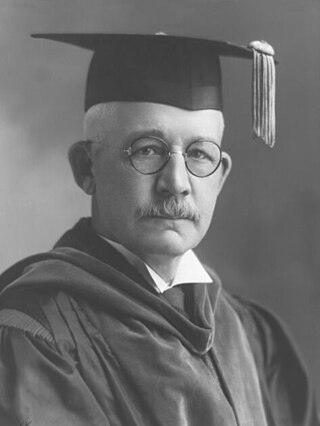
Matthew John Kane was a justice of the Oklahoma Supreme Court from 1907 to 1923, serving as chief justice from 1909 to 1911. A native of New York state, he earned a law degree at Georgetown University. Joining the Land Run of 1889 in Indian Territory, he settled in Kingfisher, Oklahoma.
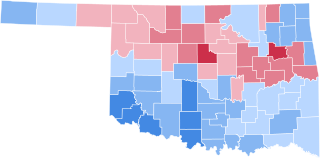
The 1908 United States presidential election in Oklahoma took place on November 3, 1908. All 46 states were part of the 1908 United States presidential election. Voters chose seven electors to the Electoral College, who voted for president and vice president. This was the first presidential election Oklahoma participated in, as it had become the 46th state on November 16, 1907.

Lillian Gallup Haskell was the inaugural First Lady of Oklahoma. She was inducted into the Oklahoma Hall of Fame in 1939.

United States gubernatorial elections were held in 1907, in eight states.
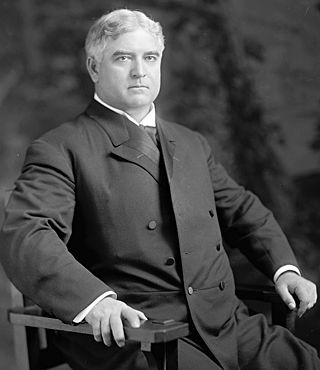
The 1908 Nebraska gubernatorial election was held on November 3, 1908.

The 1908 Oklahoma elections were held on November 3, 1908, in the U.S. State of Oklahoma. Oklahoma voters participated in the 1908 United States presidential election and the 1908 United States House of Representatives elections. Elections also took place for the Oklahoma Corporation Commission and Oklahoma Supreme Court; the first five state questions all failed to gain voter approval.
